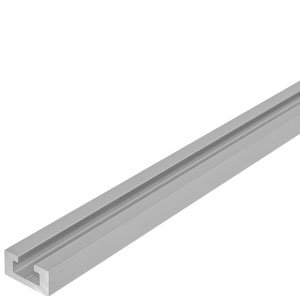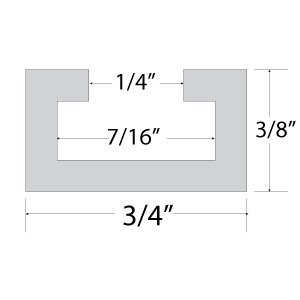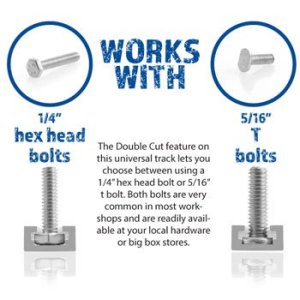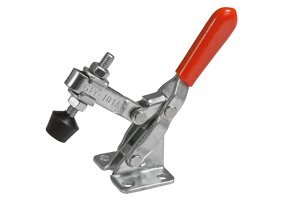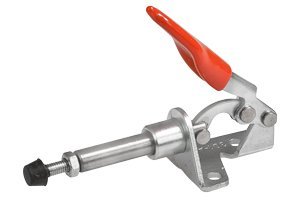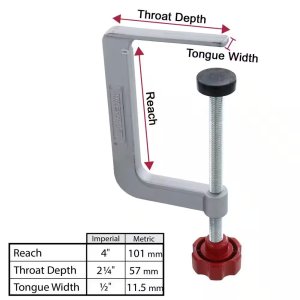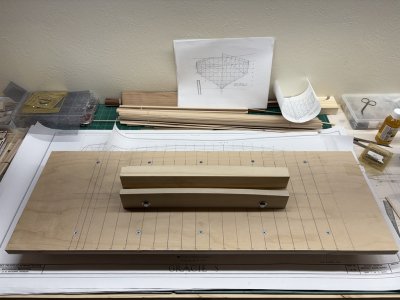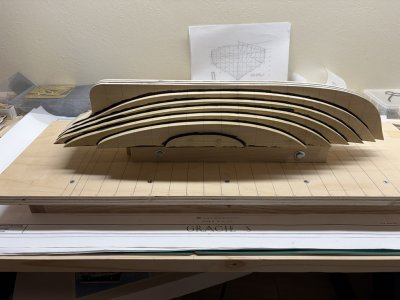- Joined
- Dec 1, 2016
- Messages
- 6,288
- Points
- 728

 |
As a way to introduce our brass coins to the community, we will raffle off a free coin during the month of August. Follow link ABOVE for instructions for entering. |
 |





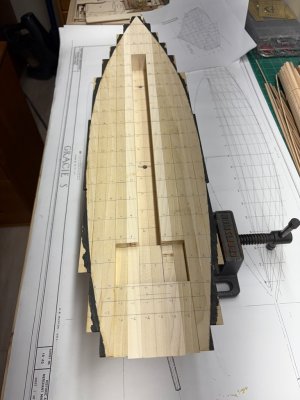



More input the better!Greg,
Elegant looking start.
I hope me projecting what I would try from looking at your process so far is OK.
The slope for removal of the lift closest to the keel? I find intimidating. I am not sure how I would do it. It is really acute.
You have it all glued up?
I would use my drum sander to remove the bulk of the transition wood from each layer before I bonded it. Not too close because it is a dynamic curve from one buttock line to the next. A flat facet would be the natural product if the removal is literal line to line.
You have station lines. Now the lines on the lifts will be quickly gone. The lines at the keel and at the rail will remain.
In my drawing program I trace each station's outside shape on its own layer. I cycle the three easy to select colors: RGB for the pattern. #16 = R - #14 G - #12 B - #10 R and #18 G - #20 B - #22 R etc. It is not as important for you to idiot proof the patterns as it is for me, but you never know. And all black can lead to loss of focus. You only have Keel, LWL, and Rail to worry about - no wales no port sills, but I would include those three on each station pattern. With what you are doing also have each buttock line: Black. A base layer has the reference grid.
Each station is a separate layer. I combine (COLLAPSE LAYERS) each station with a copy of the grid. On a canvas that is the size of the printer paper I space each layer. I leave plenty of room outside the pattern before I site the next one. I include the station number for each station. Print.
For GracieS, I think that 5x8 cards are large enough, I glue a three layer ply of the cards using an adhesive that is not water based. Duco works for me.
I glue the pattern for each station on a separate card - again Duco and not the rubber cement I use on frame stock there is no need to remove the pattern when it has done its job. I cut away the inside. Sharp and Blunt's do the job for me.
A gauge for each station and the location for LWL. For GracieS the LWL is a straight line and perhaps a laser line level is a more sure thing but more data is good to have.


Find the dead flat on your drawing. It’s usually marked by a symbol. ( a circle with two half circles back to back). It should be the widest hull section on your body plan.

